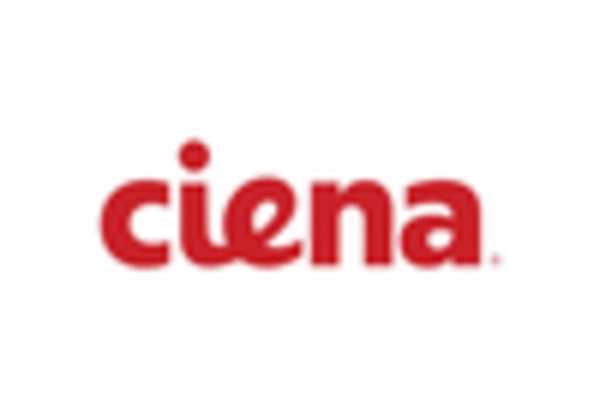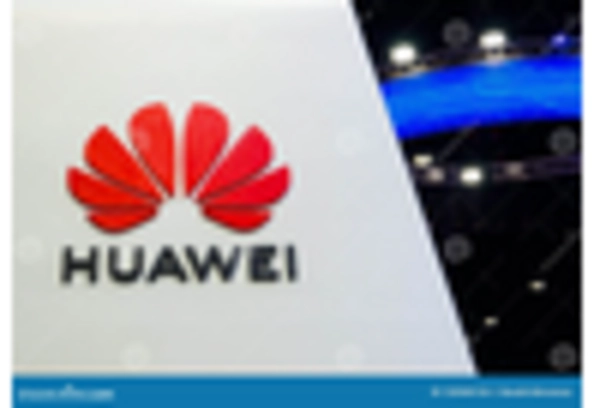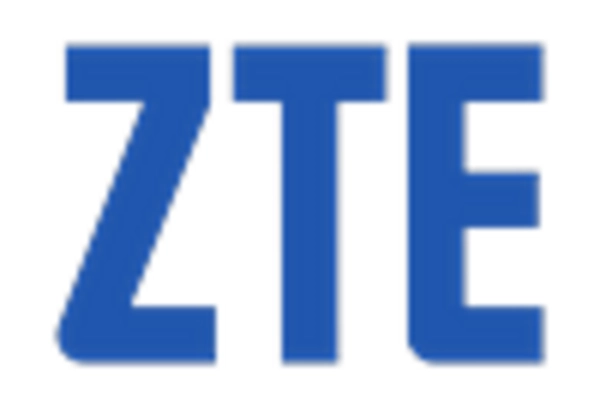The optical network-hardware market in Canada is characterized by a dynamic competitive landscape, driven by rapid technological advancements and increasing demand for high-speed connectivity. Major players such as Cisco Systems (US), Huawei Technologies (CN), and Nokia (FI) are at the forefront, each adopting distinct strategies to enhance their market presence. Cisco Systems (US) focuses on innovation through the development of advanced optical networking solutions, while Huawei Technologies (CN) emphasizes regional expansion and partnerships to bolster its foothold in North America. Nokia (FI), on the other hand, is heavily investing in digital transformation initiatives, aiming to integrate AI and machine learning into its product offerings, thereby enhancing operational efficiency and customer experience. Collectively, these strategies contribute to a competitive environment that is increasingly centered around technological differentiation and customer-centric solutions.
Key business tactics within this market include localizing manufacturing and optimizing supply chains to mitigate risks and enhance responsiveness to market demands. The competitive structure appears moderately fragmented, with several key players vying for market share. This fragmentation is indicative of a landscape where innovation and strategic partnerships play a crucial role in shaping competitive dynamics, as companies seek to leverage their strengths to capture emerging opportunities.
In October 2025, Ciena Corporation (US) announced a strategic partnership with a leading Canadian telecommunications provider to enhance its optical networking capabilities. This collaboration is expected to facilitate the deployment of next-generation optical solutions, thereby addressing the growing demand for bandwidth and improving service delivery. The strategic importance of this partnership lies in Ciena's ability to leverage local expertise and infrastructure, which may significantly enhance its competitive positioning in the Canadian market.
In September 2025, Juniper Networks (US) unveiled a new line of optical networking products designed to optimize network performance and reduce operational costs. This launch reflects Juniper's commitment to innovation and its strategic focus on providing cutting-edge solutions that meet the evolving needs of service providers. The introduction of these products is likely to strengthen Juniper's market presence and attract new customers seeking advanced networking solutions.
In August 2025, ZTE Corporation (CN) expanded its research and development efforts in Canada, focusing on the development of sustainable optical networking technologies. This initiative aligns with global trends towards sustainability and positions ZTE as a forward-thinking player in the market. By investing in environmentally friendly technologies, ZTE may enhance its brand reputation and appeal to environmentally conscious customers, thereby gaining a competitive edge.
As of November 2025, current trends in the optical network-hardware market are increasingly defined by digitalization, sustainability, and the integration of AI technologies. Strategic alliances are becoming more prevalent, as companies recognize the value of collaboration in driving innovation and enhancing market reach. Looking ahead, competitive differentiation is likely to evolve, shifting from traditional price-based competition to a focus on technological innovation, supply chain reliability, and sustainable practices. This transition underscores the importance of adaptability and forward-thinking strategies in navigating the complexities of the optical network-hardware market.

















Leave a Comment